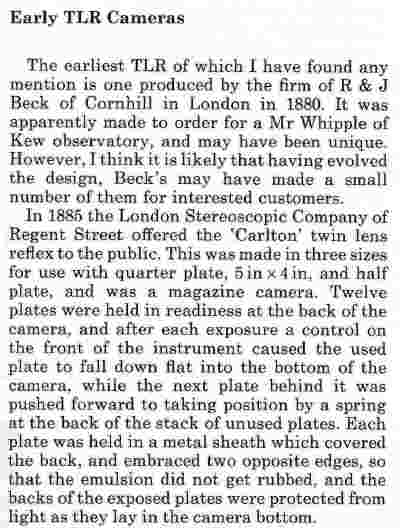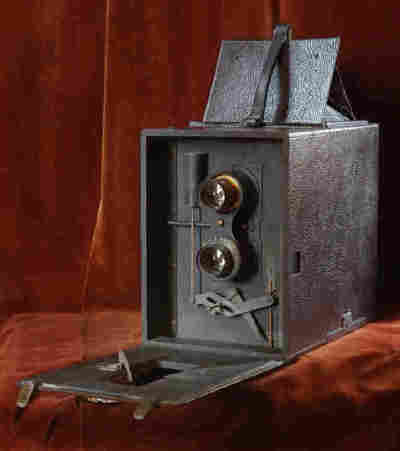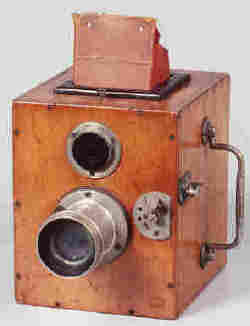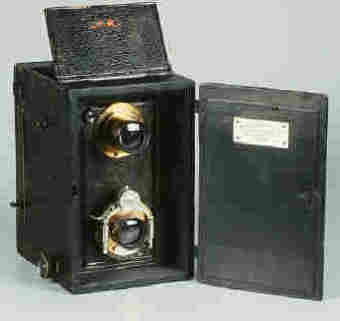A Severely Abbreviated History of The TLR
The exact history of the twin lens camera is frequently a shade obscure. However, I have tried here to pull out a few of the highlights to show how the idea evolved.
|
The text extract at right is from Edward Holmes' An Age Of Cameras (1978), which is a prime source for my knowledge of early TLRs. George Matthews Whipple was a scientist and Superintendent of the Royal Observatory at Kew. It seems the design concept was his - to build a mirror reflex camera for cloud photography. As far as I can divine, the idea was to use a camera with lenses pointing upwards, but be able to compose the picture whilst looking horizontally. It seems this camera also used geared linking to synchronise the lenses. |

|
_________________________________________________________________________ |
Holmes implies the London Stereoscopic Co's "Carlton" model, was the first off-the-shelf TLR from 1885. Interestingly, McKeown dates it from "c1895", a significant difference at a time of rapid camera evolution. |

|

|

|
_________________________________________________________________________
|
Then came the Rolleiflex...This is not the place for a proper Rollei history; that has been done at great length and detail by others more expert than I about the story. For those wanting detail, I'd refer you to the Global Rollei Club's excellent site or to Ian Parker's various books (see my Bibliography/Sources page). |